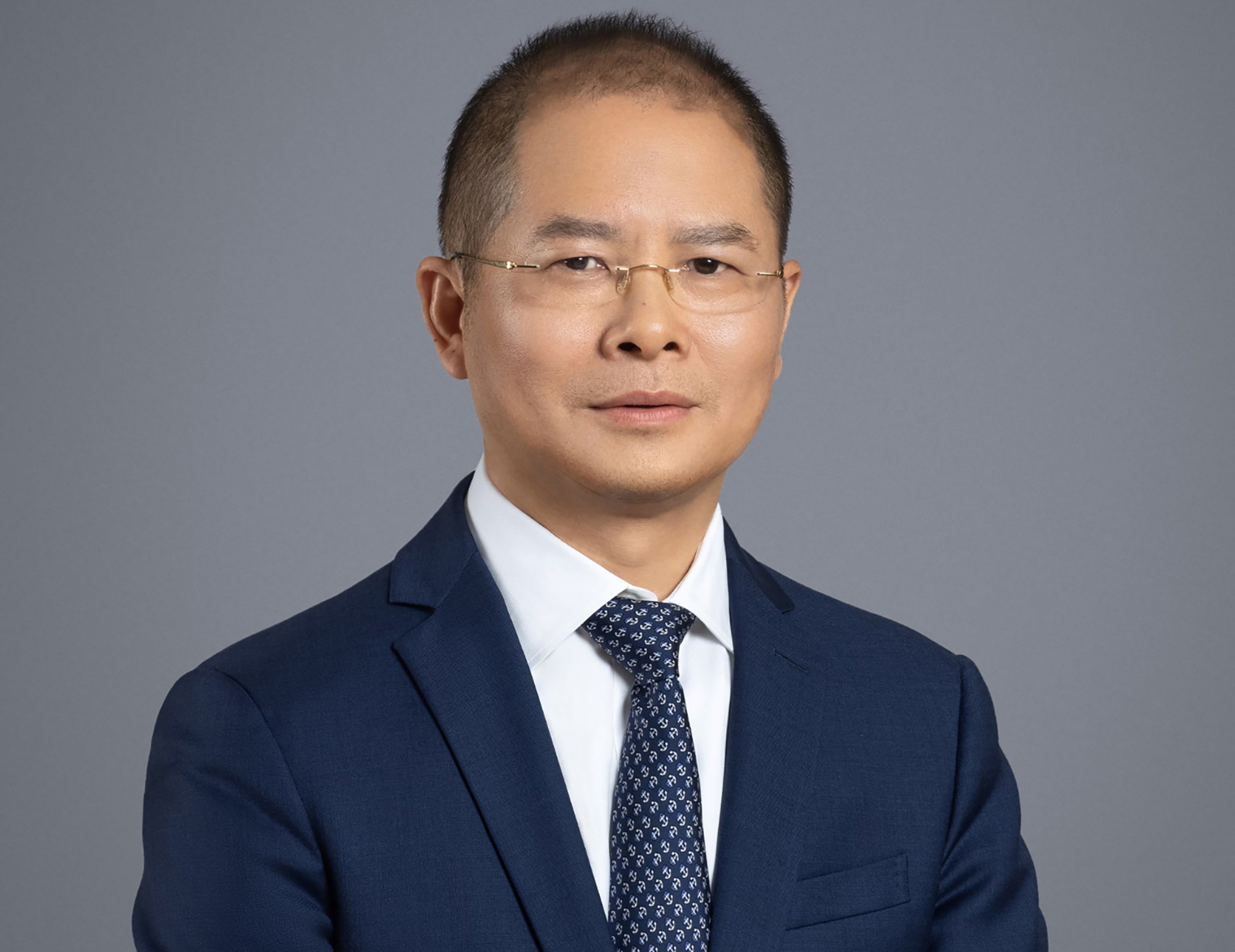Advertisement
Advertisement

Tech war: Huawei deputy chairman Eric Xu urges more support for Chinese-made semiconductors despite gap with advanced foreign chips
- Huawei’s Eric Xu said greater adoption of home-developed chips, servers and personal computers would help China achieve hi-tech advances
- China’s semiconductor manufacturing technology will continue to be in catch-up mode for a long time because of US export controls, he said
Iris Dengin Shenzhen
A top executive of US-blacklisted Huawei Technologies has called on China to adopt more home-developed semiconductors even though these lag behind chips produced with foreign technology, weeks after the Shenzhen-based company launched new 5G smartphones powered by a “breakthrough” Chinese-made advanced processor.
“There is still a [technological] gap between China-made and foreign-developed chips, servers and personal computers, but if we don’t use [home-grown products] that gap will never close,” said Huawei deputy chairman Eric Xu Zhijun, who also serves as one of the company’s rotating chairmen, in a report by local media China Business News over the weekend.
“If we use them on a large scale, it’s possible that it will help propel advances in our technology and products,” Xu said in a speech at the 2023 World Computing Conference held in Changsha, capital of central Hunan province.
His remarks come amid the patriotic fervour inspired by Huawei’s recent launch of the Mate 60 Pro and Mate 60 Pro+ 5G smartphones powered by the advanced Kirin 9000s processor, which are all made-in-China products that have become symbolic of the country’s defiance of crippling US tech sanctions.

“It will be challenging or impossible to obtain advanced chips or computing systems due to US export controls,” Xu said. “Based on our past experience and projection of future developments, this will continue to be a long-term issue.”
That is why Chinese firms must develop chips based on home-developed technologies that are free from restrictions to minimise such uncertainty, he said.
Huawei believes China’s semiconductor manufacturing technology will continue to be in catch-up mode for a long time, according to Xu.
Semiconductors sit at the centre of a fully-fledged tech war between the world’s two largest economies, with the US imposing various trade sanctions that have stymied China’s ambitions to achieve technological self-reliance.
US Republican lawmakers urge Biden to crack down on Huawei, SMIC
US Republican lawmakers urge Biden to crack down on Huawei, SMIC
Privately held Huawei, along with its chip design arm HiSilicon, were added to Washington’s Entity List in May 2019. The company has scrambled to adapt its production of smartphones and telecommunications network equipment amid tightened trade restrictions imposed by Washington in 2020, covering access to semiconductors developed or produced using US technology, from anywhere.
With the growing popularity of its new Mate 60 Pro devices, Huawei has seen a chance to restore its handset business back atop the world’s biggest smartphone market. In the second quarter, Huawei returned to China’s top-five smartphone vendor rankings.
In his speech at the conference in Changsha, Xu did not specifically mention anything about the advanced processor on Huawei’s latest 5G smartphones, adding to the mystery of where and how the Kirin 9000s was made. A third-party handset teardown alleged that the advanced chip was made by top Chinese foundry Semiconductor Manufacturing International Corp, which has also kept mum about this topic.
Xu, instead, touted Huawei’s HiSilicon-designed Kunpeng and Ascend chipsets as alternative central processing units for domestic computers used in cloud computing services and for training artificial intelligence language models.

31
